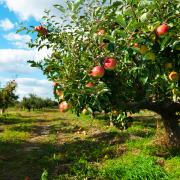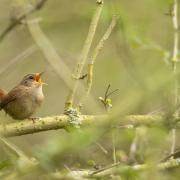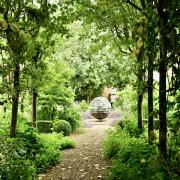Read on for a greater understanding of our festive connections with wildlife
Snowflakes fall gently past the window. Suddenly a robin appears with a flick of its brown wings and lands on the frozen ground. It notices you watching, but your gaze has already drifted to the bright red berries on the holly bush. You can’t help but feel a certain festiveness come over you, but why is it that we associate these species with Christmas? And will you ever really see a partridge in a pear tree?
The famous robin
If you look at your Christmas cards this season, it’s likely many are adorned with robins. This might also be true of your favourite festive jumper. Crowned Britain’s National Bird in 2015, robins are a garden regular. You’ll hear their song in winter too, as these heartfelt songsters sometimes sing near streetlights. But where does their association with Christmas come from? When Victorian postmen delivered festive cards, they wore bright red uniforms and were nicknamed ‘robins’. This bird also features in Christianity where it’s believed a robin fanned the flames of a fire to prevent it from going out, helping to keep the baby Jesus warm. The robin’s chest was scorched in the process, causing it and those of its descendants to turn red.
This species is certainly firmly tied to Christmas but harsh winters can make their natural food supplies scarce. You can help by keeping garden bird feeders topped up and providing fresh water. You can also record your sightings of this species during the Big Garden Birdwatch survey in January, which helps provide a snapshot into how garden bird populations are faring.

Deck the halls
With its spiky leaves and bright red berries, holly is an appealing plant, and before pine trees became the favoured evergreen for the season, this species was used as a festive decoration for centuries. Holly has Pagan associations with Winter Solstice traditions, as it is said to ward off evil spirits, and for Christians, this plant is a symbol of the crown of thorns that Christ wore.
Ivy is another evergreen that is associated with the season and, along with holly, produces berries that are loved by birds from woodpigeons to blackbirds. Ivy is also an important late nectar source for insects, such as hoverflies, and both plants are a food source for caterpillars of the holly blue butterfly.

A partridge in a pear tree
The popular carol the Twelve Days of Christmas has linked many birds to this time of year, none more so than the partridge. However, if you look for one in a pear tree you’ll be disappointed, as the native grey partridge is a ground bird and will nest there too. This species lives in lowland arable areas but has suffered severe population declines in recent years. So, the partridge you’re more likely to see is the red-legged partridge, an introduced species from continental Europe.
Turtle doves are another bird repetitively mentioned in this festive tune, but they’re actually a migratory species and spend the winter in Sub-Saharan Africa. You won’t hear their ‘purring’ call until spring, although sadly they have suffered a population crash of 98% in the UK since the 1970s. Thankfully, Operation Turtle Dove has been set up to help reverse these declines. Read more at operationturtledove.org
To discover how to help garden wildlife and take part in the Big Garden Birdwatch, visit rspb.org.uk
Find the perfect Christmas present at the RSPB shop, with gifts from homeware to food, kid’s toys, binoculars and gardening accessories https://shopping.rspb.org.uk/



























